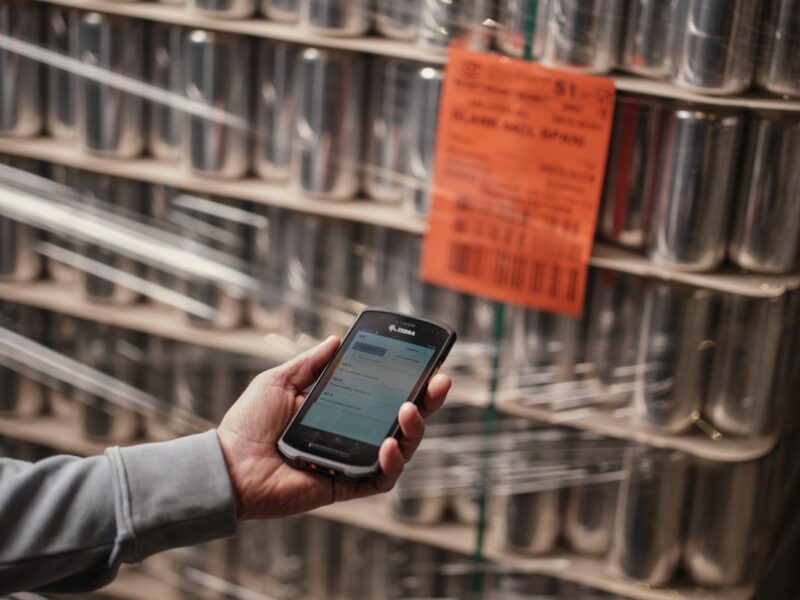How to keep your inventory accurate
Learn the importance of keeping high inventory accuracy and how you can use tips and tricks for record keeping.

Ioana Neamt

Imagine a world where your inventory is 100% accurate and where you always know exactly what’s sitting in your warehouse on any given day. Sounds too good to be true, right? We’re here to tell you it’s not. In fact, with the right tricks at your disposal, it’s actually quite easy!
Read on for the ultimate guide to maintaining an accurate inventory, including how to calculate its current state and ways you can improve going forward.
What is inventory accuracy?
Having an accurate inventory simply means that all your inventory records match the physical stock sitting on your shelves. In other words, when your records say you have 1,000 units of products, all 1,000 of them are currently in your warehouse.
It’s crucial for keeping your operations efficient and making sure everyone in your business has an accurate view of what your finances look like.

Why is inventory accuracy important?
If you’re still questioning why having an accurate inventory is important, we’ve covered it below:
It keeps your operations running efficiently — An accurate inventory will help you actively avoid stockouts and overstocking, so you always have the right amount of product on hand to meet demand without wasting any resources.
Your business can stay in good financial health — A correct inventory count has a positive knock-on effect on your financial statements — in short terms, they’ll be accurate, too. All of this is crucial for budgeting and forecasting, keeping your business healthy.
Customers will be more satisfied — When you have an accurate inventory, you’re able to fulfill your orders better to keep your customers happy. No one likes to receive an “out of stock notification” after placing an order.
Prevent losses — Keeping tight control over your inventory helps identify any discrepancies early on to reduce the risk of theft and damage.

Why is inventory accuracy a challenge for businesses?
Keeping inventory accurate can almost feel like herding cats — tricky and chaotic. Below are just a few reasons why you may have found inventory tracking a bit of a challenge.
Human-made errors — Mistakes happen. Anything from miscounting and incorrect data entry to misplaced items can lead to inaccuracies presenting themselves in your records.
Complex inventory systems — As your business continues to grow and evolve, so too does the complexity of your inventory systems. You may have to tackle multiple different warehouses and lots of different products, which can all make handling stock a lot more complicated.
Seasonal changes — Busy seasons like Christmas time can disrupt your inventory routines, making it that much harder to keep track of your stock. This doesn’t give you a very accurate picture of the day to day sales in your business.
Issues with your current technology — You may face problems because you’re using outdated systems, which can lead to data mismatches and major errors if you’re not careful.
Keep your inventory accurate with Katana
Katana Cloud Inventory Platform eliminates human errors and ensures your inventory records match your actual stock levels.
How to calculate inventory accuracy
Now that we’ve covered why keeping your inventory accurate is just that important, we’re diving into how you can calculate it for yourself. Assessing the current state of your inventory can help you put in the manpower to make it more accurate.
Physical count
Before anything else, you should conduct a physical count of your industry. You’ll need all hands on deck here. Take everything out of your warehouse and count every last item. Depending on how big your business is, you should do this either monthly (for smaller businesses), quarterly, or at least annually (for a bigger business).
Inventory accuracy rate formula
Once you’ve gotten your physical count out of the way, start to calculate your inventory accuracy rate. The formula is relatively straightforward. Here it is below:
Inventory accuracy rate = (Recorded items / counted items ) × 100
Let’s say that your records show that you have 1,000 units, but after physically counting, you only have 950 units. Your inventory accuracy rate would be:
950 / 1000 x 100 = 95%
It goes without saying that the higher your percentage, the more accurate your inventory count.
Inventory valuation
As part of your financial reporting, you also need to do an inventory valuation. You need to assign a monetary value to your inventory so you can understand your finances better.
You can use several methods to do this properly, including:
- First-in-first-out (FIFO)
- Last-in-first-out (LIFO)
- Weighted average cost
Choose the method that works best for your business model and how you currently carry out your accounting practices.

What is the average inventory accuracy rate?
The average inventory accuracy rate varies depending on the type of business that calculates its percentage. A study from Auburn University’s RFID lab1 shows that it was just 65% to 75%, which isn’t great considering all the inventory tracking software available at the click of a button.
Just because the average is so low doesn’t mean you should settle for it. Follow our practical tips below to stay on top of your inventory.
7 tips to improve your inventory accuracy
Don’t fall into the familiar trap of letting your inventory tracking fall by the wayside. Follow our seven tips below instead.
- Carry out regular audits of your inventory
While it sounds boring, and well, it is, auditing is also the key to keeping an accurate inventory in the long term. It basically is a manual way of making sure your records match reality without using fancy technology to help you.
Cycle counting — where you only count a small portion of your inventory regularly — can be far more manageable than a full inventory count.
- Use the right technology
Try to invest in more reliable inventory management software that offers real-time tracking and barcode scanning, like Katana. That way, you’ve got the best possible chance of keeping track of every single product coming in and out of your warehouse.
- Organize your warehouse properly
Try to keep every single product in your inventory organized and labeled. Doing this will make it less likely for you to replace items and will also make your cycle counting much easier.
- Train your team up
Your staff needs to be well-trained in the best inventory management practices and your expectations moving forward. Try to set up a training day and offer your employees the chance to record inventory themselves.
- Set reorder points
As you start reorganizing your inventory, set your minimum stock levels for each and every item. That way, you can prevent both stockouts and overstocking and stop wasting your resources.
- Monitor and analyze
Try to put best practices in place for reviewing your inventory data. Take the time to look for patterns or any discrepancies that crop up again and again. This will help you to avoid them altogether in the future.
- Integrate your systems together
Make sure your inventory management system can connect easily with all your other business systems, including accounting and sales platforms.

Improve your inventory accuracy with Katana
So, you’ve finished this article and you’re still overwhelmed by the thought of managing your inventory? Don’t be. Instead, say hello to Katana.
Katana can help you streamline your inventory accuracy efforts by offering you powerful inventory software that works to simplify your operations and boost the productivity of your business.
We provide real-time inventory tracking, automated reorder points, and detailed reporting so you always know what you have ready in stock. Even better, it’s user-friendly, so you don’t have to spend hours trying to get to grips with the Katana platform.
So, get a demo of Katana today and take your inventory management to the next level.
FAQs
Cycle counting is simply the method of counting just a small portion of your inventory regularly rather than pulling everything out and having to do a full inventory count.
The common causes you’ll most often find causing inventory accuracies include:
- Human error
- Theft
- Damage
- Admin mistakes
- Tech issues
Using inventory tracking technology can go some way towards fixing these problems, but you should still train your team on best practices so everyone is on board and on the same page.
If you don’t take control of your inventory records and make it one of your top priorities, you’ll likely see problems with stockouts and overstocking, leading to a loss of income – which is never good!
Sources
1Inventory Accuracy: What Every Business Owner Should Know, OptimoRoute (2021)

Ioana Neamt
Table of contents
Get inventory trends, news, and tips every month
Get visibility over your sales and stock
Wave goodbye to uncertainty with Katana Cloud Inventory — AI-powered for total inventory control